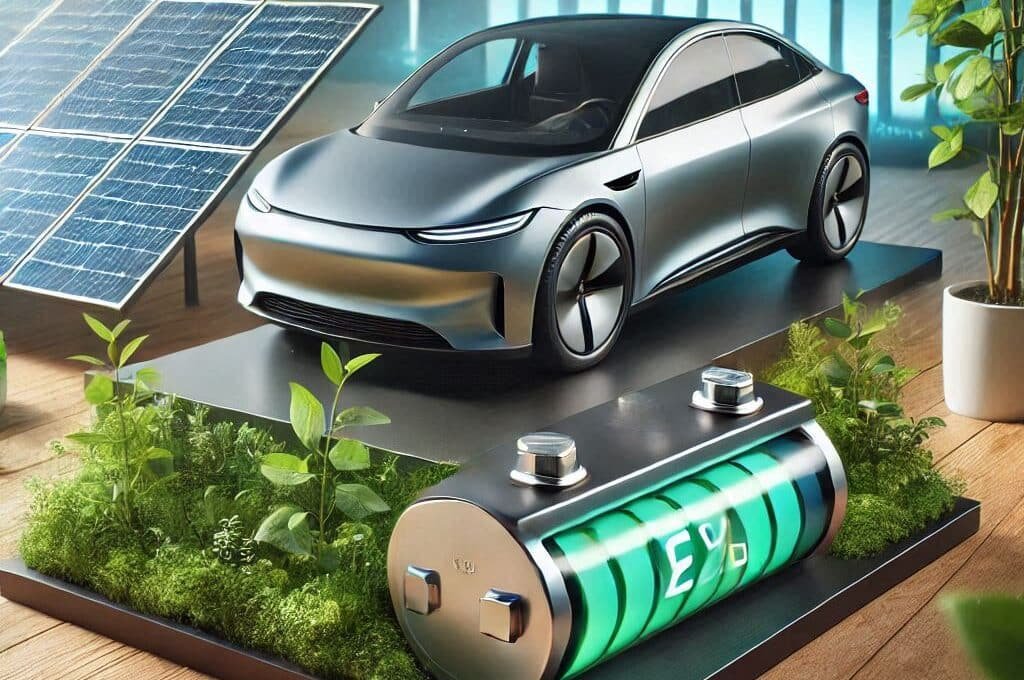Electric vehicles (EVs) are revolutionizing the automotive industry, and at the heart of this transformation lies the electric car battery. This critical component stores and supplies the energy needed to power the electric motor, making it a fundamental aspect of EV performance, range, and efficiency. In this article, we’ll delve into the intricate workings of electric car batteries, exploring their composition, operation, and the technologies that make them essential for sustainable transportation.
The Basics of Electric Car Batteries
Electric car batteries are rechargeable energy storage systems that power the electric motor. The most common type of battery used in modern EVs is the lithium-ion battery. These batteries are similar to those found in smartphones and laptops but are larger, more durable, and optimized for automotive applications.
Key Components of an Electric Car Battery
- Cells:
Lithium-ion batteries are composed of multiple cells. Each cell contains:- Cathode: The positive electrode, usually made of a lithium-based compound.
- Anode: The negative electrode, typically made of graphite.
- Electrolyte: A liquid or gel that facilitates the movement of lithium ions between the electrodes.
- Separator: A thin membrane that prevents the electrodes from touching while allowing ion flow.
- Modules and Packs:
Cells are grouped into modules, and multiple modules are assembled into a battery pack. The pack includes cooling systems, safety mechanisms, and a battery management system (BMS). - Battery Management System (BMS):
The BMS monitors and controls the battery’s performance, ensuring safety, efficiency, and longevity. It regulates charging and discharging, prevents overheating, and balances the cells to maintain uniform performance.
How Electric Car Batteries Work
Electric car batteries operate on the principle of electrochemical energy conversion, where chemical energy is transformed into electrical energy. Here’s how the process works:
Charging the Battery
- During charging, electricity from the grid flows into the battery pack.
- Lithium ions move from the cathode to the anode through the electrolyte.
- This process stores energy in the form of a chemical reaction.
Discharging the Battery
- When the car is in use, the battery discharges energy to power the electric motor.
- Lithium ions move back from the anode to the cathode, releasing stored energy.
- This energy is converted into electricity, which drives the motor.
Key Technologies in Electric Car Batteries
- Lithium-Ion Chemistry:
- Lithium-ion batteries are preferred for their high energy density, long cycle life, and lightweight design.
- Variations in chemistry, such as Nickel-Manganese-Cobalt (NMC) or Lithium Iron Phosphate (LFP), offer trade-offs between energy density, cost, and thermal stability.
- Thermal Management Systems:
- EV batteries generate heat during operation. Efficient cooling systems, such as liquid or air cooling, are essential to prevent overheating and ensure optimal performance.
- Fast Charging:
- Advanced charging technologies allow EV batteries to recharge quickly, with some systems delivering an 80% charge in under 30 minutes. Fast charging requires robust thermal management to avoid damage.
- Regenerative Braking:
- EVs capture energy during braking and feed it back into the battery. This increases efficiency and extends the driving range.
- Solid-State Batteries (Emerging Technology):
- Solid-state batteries replace the liquid electrolyte with a solid material, offering higher energy density, faster charging, and improved safety. They are seen as the future of EV battery technology.
Factors Affecting Battery Performance
- Capacity and Range:
- Battery capacity, measured in kilowatt-hours (kWh), determines how much energy the battery can store. Larger capacities provide greater range but add weight and cost.
- Charging Cycles:
- A battery’s lifespan is measured in charge-discharge cycles. Over time, repeated cycling causes degradation, reducing capacity and performance.
- Temperature Sensitivity:
- Extreme temperatures can impact battery efficiency. Cold weather reduces range, while excessive heat accelerates wear.
- Weight and Size:
- Batteries are heavy and bulky, which can affect vehicle design and handling. Manufacturers strive to balance energy storage with weight optimization.
Battery Lifespan and Recycling
Lifespan
- Modern EV batteries are designed to last 8–15 years or more, depending on usage and maintenance.
- Manufacturers often provide warranties for 8–10 years or 100,000–150,000 miles.
Recycling and Second Life
- At the end of their life in vehicles, batteries can be recycled to recover valuable materials like lithium, cobalt, and nickel.
- Batteries with diminished capacity can also be repurposed for energy storage in renewable energy systems, extending their usefulness.
Challenges and Future Developments
Challenges
- Cost:
- Battery production is expensive due to the cost of raw materials and manufacturing processes.
- Resource Extraction:
- Mining for lithium, cobalt, and nickel has environmental and ethical concerns.
- Charging Infrastructure:
- Expanding fast-charging networks is essential for widespread EV adoption.
Future Developments
- Improved Energy Density:
- Researchers are developing batteries with higher energy density to extend range and reduce weight.
- Alternative Materials:
- Efforts are underway to reduce reliance on scarce and expensive materials like cobalt.
- Wireless Charging:
- Inductive charging technology may simplify charging by eliminating cables.
Conclusion
Electric car batteries are the cornerstone of the EV revolution, enabling cleaner and more sustainable transportation. While current battery technologies offer impressive performance, challenges such as cost, resource extraction, and infrastructure remain. Innovations in chemistry, design, and recycling promise to address these issues, paving the way for a future where electric mobility is accessible to all.
Understanding how EV batteries work and the advancements on the horizon can help consumers make informed decisions and appreciate the transformative impact of this technology.



